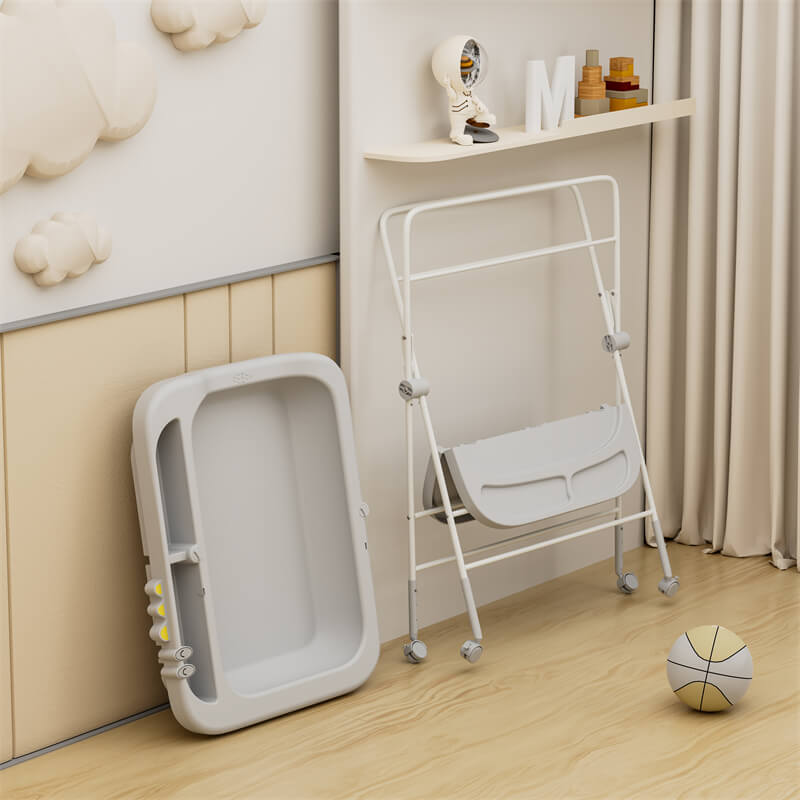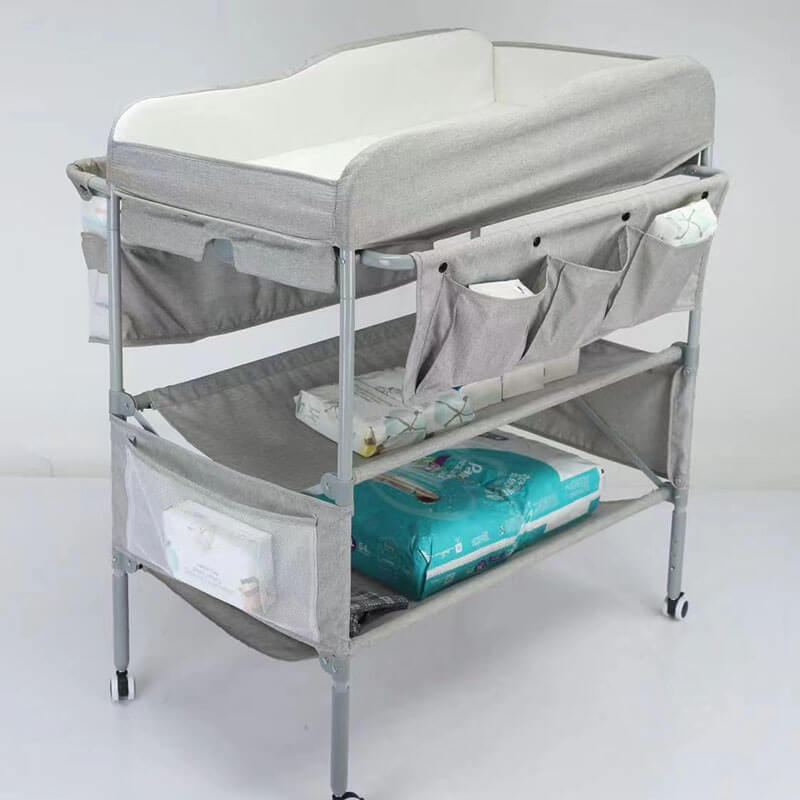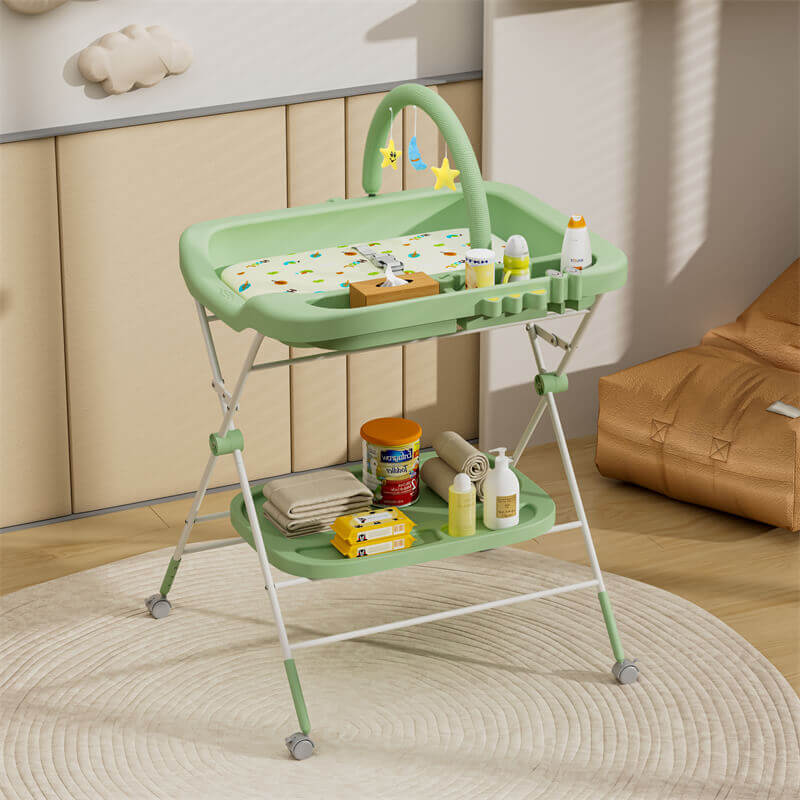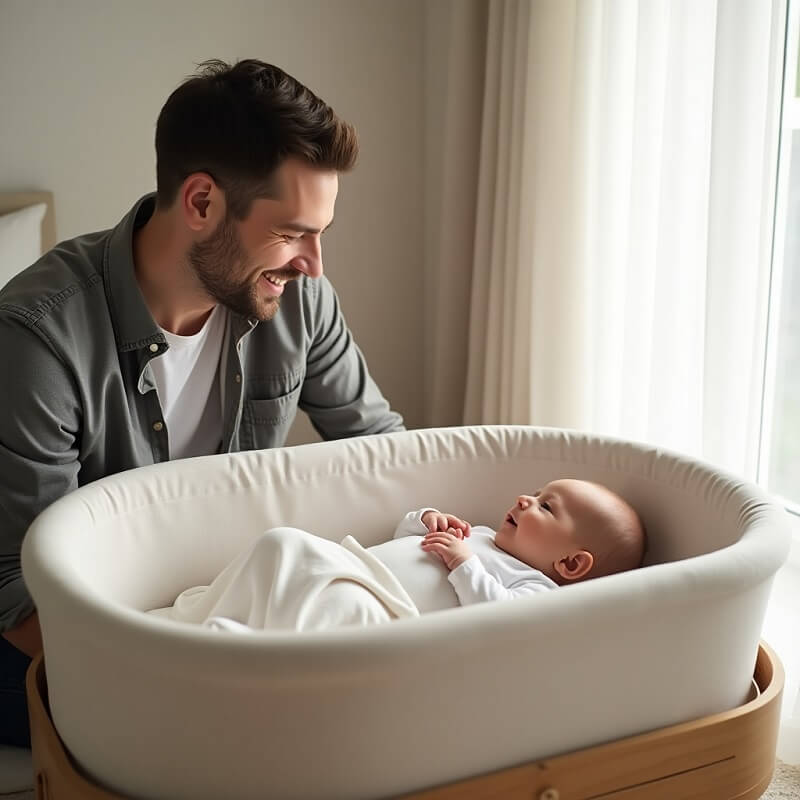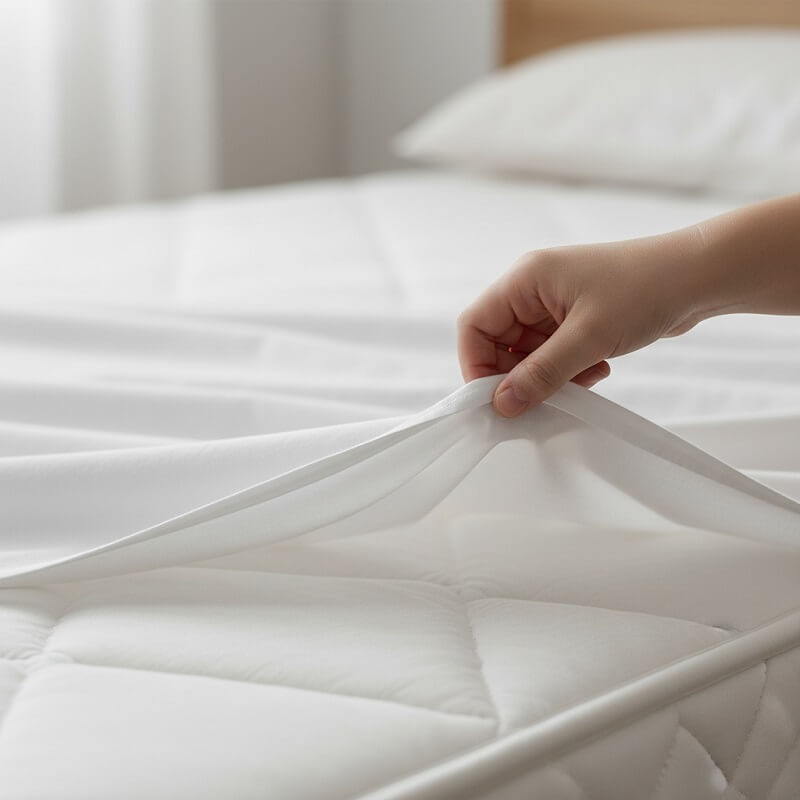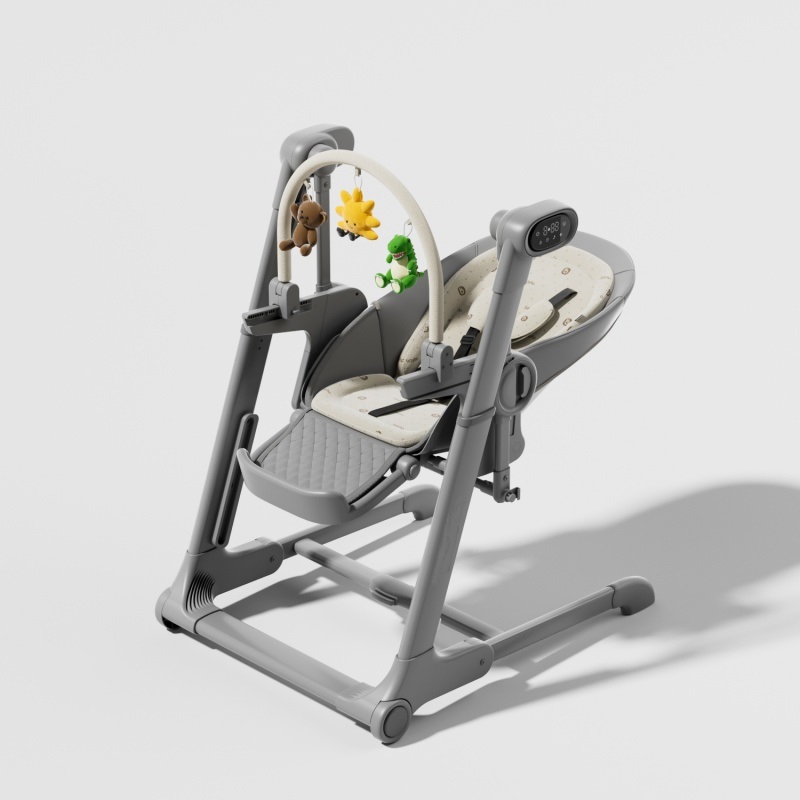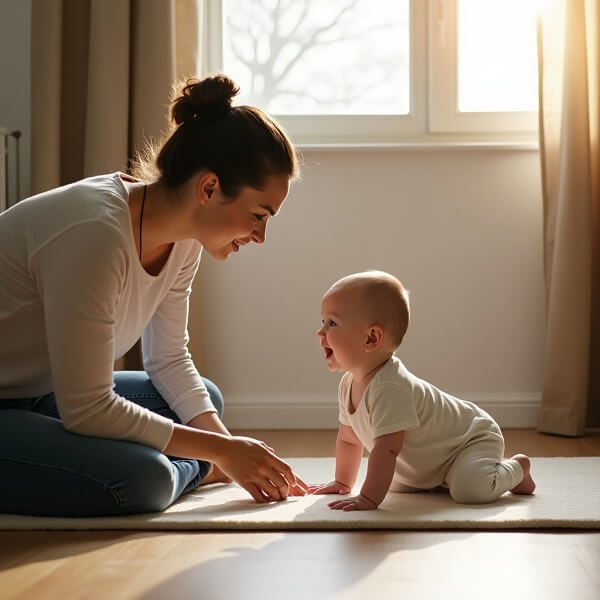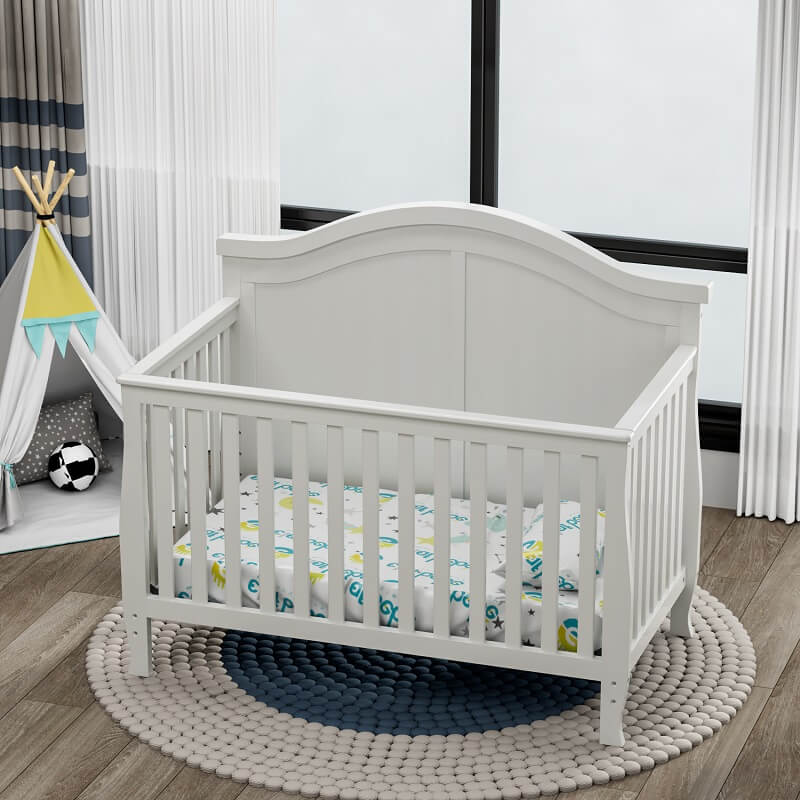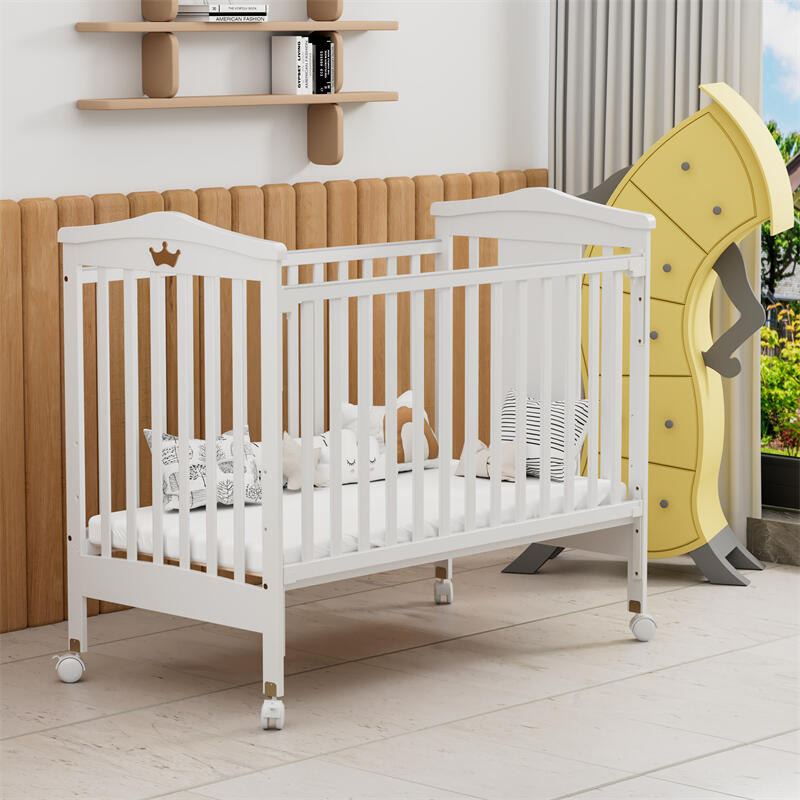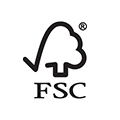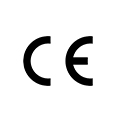Every new mom must prepare for a bout of dirty diapers. Many people find it beneficial to set up a diaper changing station with everything they need within arm’s reach.
A well-organized baby changing table may make a huge difference when it comes to handling nappies, wipes, and those cute tiny clothing. Not only does it make the changing process easier, but it also keeps your nursery clean and clutter-free.
This guide will cover all you need to know about baby changing tables, from types and safety features to selecting the best one for your nursery.
Why Is a Baby Changing Table Essential?
A baby changing table is as crucial for young children as it is for parents.
A changing station is a centralized location where you may store all of your changing supplies. This means you won’t have to rush around searching for wipes or a clean diaper when your baby requires changing.
A well-planned diaper station fosters discipline and organization into your daily routine, allowing you to retain order and efficiency amongst the chaos of parenthood.
Changing tables are often constructed to be at a comfortable height for changing diapers, reducing back strain and simplifying the operation.
Baby changing stations additionally provide parents with much-needed storage, which is not to be overlooked given how rapidly baby stuff accumulates!
Another important reason why a baby changing table is necessary is the increased safety it gives. Many versions include built-in guardrails, which substantially minimizes the likelihood of your infant rolling off. Furthermore, some tables include straps for added security for those wriggly periods.
A baby change table is a multifunctional piece of furniture that may be used as an organizer, a bathing station, or even a dresser once your baby outgrows diaper changes. Its versatility makes it a cost-effective investment.
Different Types of Baby Changing Tables
Standard Changing Tables
These are the standard freestanding units, featuring a flat surface for baby changing and storage underneath.
These are stand-alone tables intended specifically for diaper changes. They are typically massive structures made of wood, steel, or plastic with guardrails designed to remain stationary. The structures are very stable.
They are ideal for parents searching for a traditional and easy option with plenty of storage.
Dresser-Style Changing Tables
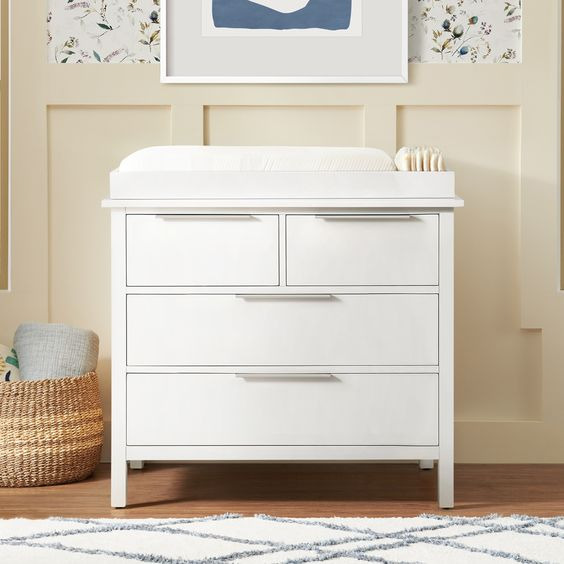
These combine a changing table top with cabinets or drawers. They provide enough storage for clothes, linens, and other baby necessities, and can be converted into standard drawers after your child outgrows diapers.
They frequently feature dressers with a removable or permanent changing tray on top. This solution makes use of existing furniture, which has the potential to save space and money.
Wall-Mounted Changing Tables
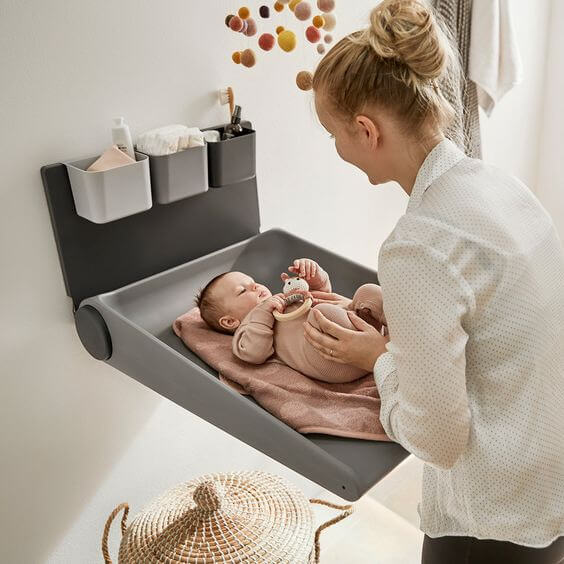
These unique changing tables are ideal for compact nurseries or bathrooms, since they fold down from the wall when necessary creating a dedicated changing place without compromising critical floor space. They disappear neatly when not in use, providing a neat and compact solution.
They are ideal for compact areas, as they frequently contain safety belts and limited storage alternatives.
Portable Changing Tables
These compact and folding tables are ideal for traveling or making quick diaper changes on the road. They frequently contain a changing pad and small storage spaces for vital supplies, so you can be prepared for any occasion.
They are ideal for families who require a versatile solution that can be moved from room to room or transported on trips.
Convertible Changing Tables

Repurposing your belongings is an important aspect of parenthood, because why not? As a result, if you have a solid desk that is no longer in use, you may easily repurpose it as a changing table. If it contains shelves or a drawer, you’re even more prepared.
They are can be used as a changing table during infancy and later turned into another piece of furniture, such as a desk or bookcase, as the child develops or vice versa.
They are appropriate for those seeking furniture that can alter over time to match the changing needs of their developing child.
Mini-Changing Table
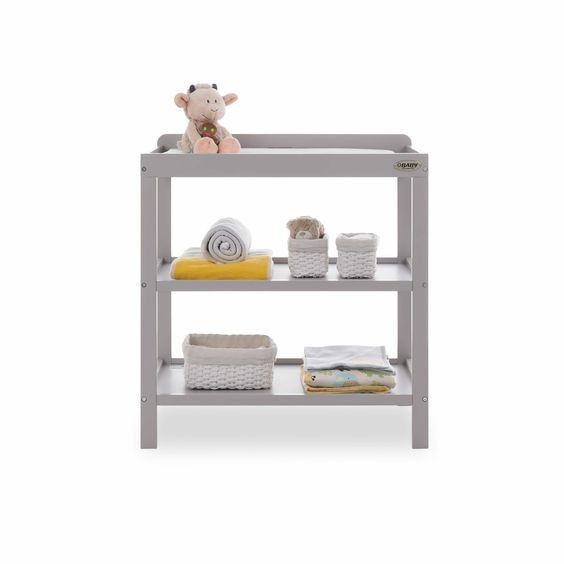
If you prefer a “real” changing table, the mini-changing table is a sensible, cost-effective, and space-saving option worth considering. These changing tables are designed for nurseries with limited space and are almost the same size as a regular changing table, but they are less bulky and more inexpensive.
Small changing tables typically have open shelves for storing diapering supplies, but they lack elegant designs and large drawers.
How High Should a Changing Table Be?
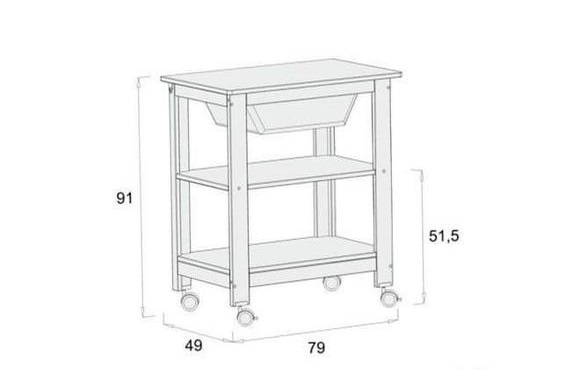
The changing table’s height is often disregarded. Ideally, it should be at a comfortable height to relieve back strain during diaper changes. Before making a decision, simulate a diaper change to determine the height.
Each changing table’s height will vary. An average comfortable changing height varying from 0.9-1 metre. To prevent back strain, use a changing table that is appropriate for your height.
Choose a table height that allows you to easily change your infant without straining your back. If possible, your arms should rest comfortably on the changing surface while you are standing straight.
Here are some guidelines to help you select the appropriate height:
Standard Height: Most changing tables are built to be 36 inches (91 cm) tall, which is approximately the height of a kitchen counter. This height allows parents to stand upright while changing the infant, which relieves tension on their back and shoulders.
Custom Heights: Depending on your height, you may want a table that is somewhat taller or shorter. Some changing tables have adjustable legs or can be set to a specified height. If you or your companion are exceptionally tall or short, seek for solutions that suit your needs.
What Safety Features Should a Baby Changing Table Have?
When selecting a changing table, prioritize your baby’s safety by looking for the following features:
Safety Rails: Make sure the changing table has raised safety rails on all sides to keep your infant from rolling off. Because the baby is high up, it is critical that they do not tumble off the table. The railing makes a significant difference! Make sure it is on all sides, as every side should be protected.
Safety Straps: Some changing tables include safety straps to keep your infant safe during diaper changes. The safety strap is really useful in preventing baby from rolling off the table, but you cannot predict if your little one could discover a way out of it! So, always keep one hand on the infant, even with the safety strap on. Never leave them alone at the changing table.
Sturdy Construction: Inspect the table’s stability and materials. It should be durable and secure. Make sure your table is robust and well-balanced. While you’re still in the store, give your changing table a strong shake and use a respectable amount of pressure. Ensure that any attachment-based tables fit firmly onto your existing furniture. Take a keen look at Fold-up models they should be tested for durability and sturdiness : When the table is open, shake it vigorously.
Shape of changing pad: The shape of the changing pad is such that the center is somewhat lower than the sides. Why is this important? It helps to keep the infant from rolling out because they would have to roll up an inclination to get off of the table. A contoured pillow (lower in the middle) will increase the safety given by the changing table’s form.
Strong Hinges: Strong hinges keep the changing station securely fixed to the wall and can hold a child’s weight on the table. Stainless steel hinges give higher load capacity as well as long-term security for your station and those being changed. Stainless steel hinges also provide a smooth opening and closing with no rust or squeaking.
What Are the Must-Have Items for a Diaper Changing Table?
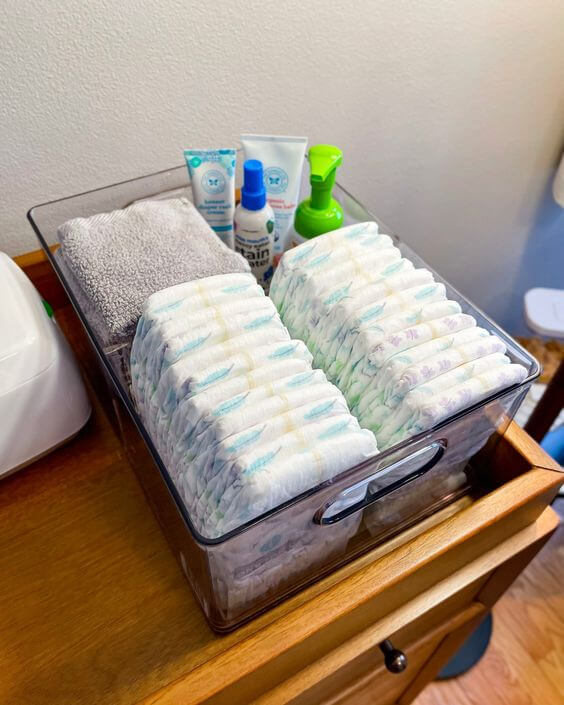
Changing Pad with Cover: The Changing Pad with Cover is where your baby will rest during diaper changes. Choose a waterproof and soft changing pad, then cover it for further protection and ease of washing.
Diapers: What is the use of a diaper change station if there are no diapers? It’s quite beneficial to always have diapers on hand, so feel free to stockpile. Stock up on diapers in the appropriate size to ensure you’re ready for the early days.
Baby wipes: Just like diapers, you’ll go through wet wipes rapidly, so buy in quantity. To avoid skin sensitivity, choose hypoallergenic wipes that are fragrance-free.
Diaper Pail: Soiled diapers are no joke, and the average baby will need to be changed 8 to 12 times per day. There will be odors and messes, so be forewarned. A hands-free diaper pail that reduces odor is ideal.
Hand Sanitizer: Use a hand sanitizer to keep your hands clean and germ-free before and after changing diapers. Also, remember to wash your hands after each change!
Extra Clothes: Accidents happen, and changing diapers isn’t always enough! Keep extra clothing on hand in case of an accident. Cotton onesies with buttons or reversible zippers provide easy access to the crotch area, making diaper changes simpler.
Baby Powder: Baby powder decreases friction and irritation by acting as a moisture-absorbing barrier. Applying baby powder on a regular basis will help keep your baby’s skin dry and avoid diaper rash.
Toys: Babies can become cranky during diaper changes. Keep a handful of their favorite toys in your changing station so they may stay engaged while you do your business. Make sure your toys are soft and washable.
A Lampshade: Keep a lampshade near your baby’s diaper changing station in case you need to change his or her diaper at night. It’s preferable to use a lampshade with dim lighting because the overhead light can be too bright and frighten your kid if they’re sleeping.
How Many Changing Tables Do You Need?
The number of changing tables you need depends on the size of your home and your lifestyle. Here are some considerations:
As a general guideline, most experts recommend having at least one dedicated changing table, situated in the nursery or primary caregiving area. This provides a designated, safe space for diaper changes and helps establish a consistent routine for your baby.
If your home has two levels, consider installing a primary changing station in the nursery—or a nursery nook within your room—and a smaller version below. You’ll most likely be changing Baby into daytime clothes and PJs at this changing station, so bear that in mind while choosing the number of changing stations to invest in. Having a second changing table or a portable changing pad in a downstairs living area or your bedroom can be convenient, especially for nighttime diaper changes or when you’re entertaining guests.
Ultimately, the number of changing tables you need will depend on your specific living situation, the number of floors in your home, and the number of caregivers involved. The goal is to have a changing station readily available wherever you and your baby spend the most time, ensuring a smooth and efficient diapering experience.
Remember, the key is to have the necessary supplies and safety features in place, regardless of the number of changing tables you choose to have.
How to Choose the Baby Changing Table for Your Nursery?
Evaluate the Storage Space You Need
Consider your storage requirements while purchasing a changing table. Consider how many diapers, wipes, clothes, and other baby items you’ll need to keep close by. Choose tables with enough shelves, drawers, or compartments to keep things organized.
Consider Investing in Changing Tables Made of Durable Materials
Select a changing table constructed of strong, robust materials that can sustain daily use. Acceptable materials include MDF and wood. Ensure that the finish is non-toxic and is simple to clean.
Take into Account Your Financial Capability
Changing tables can be costly, so set a budget ahead of time. While it may be tempting to splurge on baby furniture, keep in mind that your baby will outgrow it. Determine how much you’re willing to commit and hunt for solutions that fit your budget.
Evaluate the Style and Design of Your Home Aesthetic
Choose a table that compliments both your nursery’s overall appeal and your personal taste. Changing tables, which are available in a variety of forms, finishes, and colors, maybe a lovely addition to your nursery, merging in seamlessly with the existing furniture and décor.
Consider the Comfort and Functionality That Changing Tables Will Provide You
Changing tables not only provide a soft surface for changing your baby, yet they additionally render diaper changes more comfortable for you. You’ll probably be changing diapers a lot, so it’s ideal to have a station that’s high enough for you to stand without having to stoop over or twist.
Evaluate the Weight Capacity That the Changing Station Can Hold
Most infant changing tables have a weight capability of approximately 30 pounds (13 kg). The actual weight limit varies from table to table, so consult the manufacturer’s recommended weight limit for your changing table and discontinue use as soon as your kid outgrows it.
Evaluate the Stability of the Changing Table
When checking a changing table, give it a good shake to ensure that it fastens securely (if placed on top of a dresser) and is strong enough to support an older or active child. Check to ensure that the model you choose has no recalls.
When to Stop Using the Changing Table?
Understanding when you should stop using a changing table ensures that your baby is secure and their bottom is clean.
Consider the age and weight limit of the infant. When your infant exceeds the manufacturer’s recommended age or weight limit, which is normally 2 years old or 30 pounds (13,607 grams), stop using your changing table. Furthermore, because weight limits vary, you should always verify your changing table for weight and height constraints.
Evaluate the mobility of your infant. Diaper changes get more difficult when your baby’s mobility increases. You’ll also want to find a different changing area once your growing baby starts rolling, as this could pose a safety risk. When your baby is able to sit up or roll from back to front, indicating that they have passed this developmental milestone.
Take into account your infant’s behavioral changes. While many parents are eager for a change, it is crucial to respect your child’s autonomy and confidence. If you encounter active resistance from your child, take a step back and try again in a few days. The less you force a change, the more likely your youngster is to accept it.
Once you decide to stop using the changing table, you have a few options. You can transition to changing your child on the floor, on your bed, or invest in a low, stable surface like a dresser or changing pad on the floor.
Conclusion
Choosing a changing table is a big decision for any parent, and you ought to make an informed decision. Keep in mind that your changing table needs not only be useful, but also provide a safe and comfortable environment for you and your kid. Diaper changes will be a breeze if you make the right call, allowing you to focus on enjoying every beautiful moment with your child.

